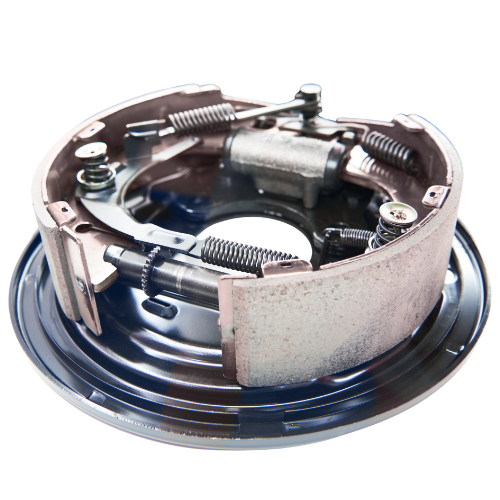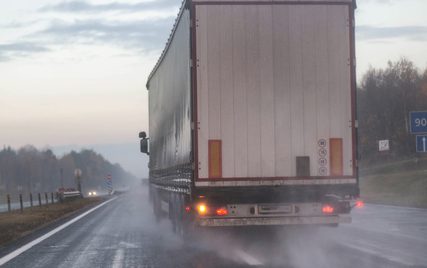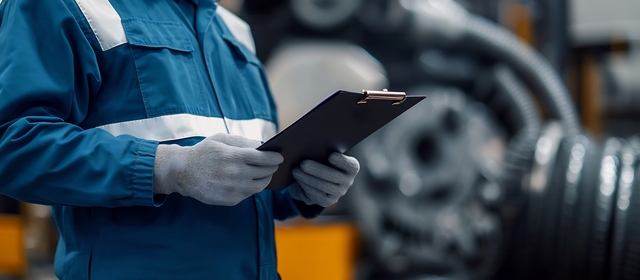Explore the four key components that make up a truck’s brake system—engineered to ensure safe, reliable, and powerful stopping performance on every road.

Truck operators often pay close attention to components like air brakes, brake chambers, and slack adjusters, but there’s one basic factor that’s often overlooked: tyre pressure.
Maintaining the correct tyre pressure on a truck doesn’t just impact fuel economy and ride comfort—it directly affects your braking system. Under-inflated tyres can change how your truck stops, how hard your brakes work, and how long critical components like brake shoes, calipers, and chambers last.
If you’re part of a fleet or drive long-haul with a heavy load, this simple maintenance item should be near the top of your list. Here’s why tyre pressure matters more than you might think.

Let’s start with the obvious. Low tyre pressure means more of the tyre touches the road. This larger contact patch creates more rolling resistance and heat, which you might think helps with grip. But in trucks, the opposite is often true.
With more flex in the tyre walls and a soft centre, under-inflated tyres reduce stability and increase braking distance. On a fully loaded rig, even a small increase in stopping distance can be dangerous—especially on downhill grades or in wet weather.
Your brake chambers may respond perfectly, but if the tyres aren’t performing, the truck won’t stop when and where you expect it to. That’s not just inconvenient—it’s a serious safety risk.
In braking systems that use air brakes, the components are designed with a certain expectation: that the tyres underneath are inflated correctly and ready to do their share of the work. If they’re not, the brakes must compensate.
For example, when a truck is pulling a heavy trailer and one or more tyres are low, the traction can vary from axle to axle. This can lead to uneven braking, unpredictable handling, and in some cases, skidding or lock-up. Even with ABS in place, your slack adjusters and chambers are being asked to manage an imbalance they weren’t built for.
Over time, this kind of strain adds wear to the system and reduces the predictability of your braking response.
When tyres don’t do their job properly, the rest of your braking system steps in—and that’s where trouble begins. Trucks rely on finely balanced brake configurations. Each brake chamber, brake shoe, and slack adjuster has a specific role. But when low tyre pressure causes a loss in grip or stopping ability, these parts overcompensate.
The result?
This unnecessary load reduces the life of your components and increases your maintenance costs—something no operator wants.
Most modern heavy vehicles come with ABS to prevent brake lockup. But that system depends on consistent traction across all tyres. If one tyre is significantly under-inflated, it can cause wheel speed discrepancies. The ABS senses this and engages, even when it might not be necessary.
This means:
If you’re relying on your ABS to do all the work, that’s a sign something else—like your tyre pressure—isn’t right.
Emergency stops don’t just test the brakes—they test the whole vehicle. Trucks with uneven or low tyre pressure lose braking efficiency at the worst possible time. The added friction from under-inflated tyres can throw off the balance, especially in multi-axle or B-double configurations.
The brake system, including the brake calipers, slack adjusters, and chambers, is forced to do more work to stop the vehicle. If tyres are underperforming, the load doesn’t distribute evenly during deceleration. That can lead to trailer sway, increased jackknife risk, or slower reaction times—all of which can put lives at risk.
In many serious braking failures, tyre condition was a contributing factor—not because the tyres burst, but because they weren’t holding enough pressure to support the system.

If you’re already doing regular checks on brake chamber condition, measuring slack adjuster travel, or replacing worn brake shoes, tyre pressure should be checked at the same time. They’re part of the same system.
When tyre pressure is within the recommended range:
All it takes is a simple pressure check to ensure the rest of your system isn’t being pushed harder than it needs to be.
Every truck is different, but most tyre pressure issues can be spotted early—if you know where to look. When inspecting your vehicle:
Even small signs can point to larger issues if left unchecked.
Truck braking systems aren’t just about what’s under the hood or mounted to the axle. They rely on tyre performance to operate efficiently. Running on low pressure doesn’t just wear out tyres faster—it puts pressure on your brake shoes, air lines, chambers, and slack adjusters, too.
If you’re serious about safety and uptime, make tyre pressure part of your regular brake inspection routine. It’s a simple step that protects your truck, your load, and everyone else on the road.
Does low tyre pressure affect braking on trucks more than cars?
Yes. Trucks are heavier, carry more load, and rely on a more complex braking system. Low pressure has a bigger impact on stopping distance and component stress.
Can tyre pressure affect slack adjuster performance?
Yes. When brakes are overused due to low tyre grip, slack adjusters may activate more frequently, leading to increased wear or misalignment.
How often should I check tyre pressure on a heavy vehicle?
Before every trip is ideal, particularly for long-haul journeys. Tyres can lose pressure slowly and still appear inflated.
Is ABS affected by low tyre pressure?
Definitely. Uneven tyre pressure can cause the ABS to misinterpret wheel speed, leading to unnecessary engagement and brake pulsing.
Will tyre pressure problems damage brake chambers?
Over time, yes. If brakes are working harder due to poor tyre performance, brake chambers and related air components may overheat or fail prematurely.
Where can I find quality replacement brake parts?
If you’re looking for reliable truck parts—from chambers to slack adjusters—we’ve got you covered. Browse our selection online or speak to our team for help choosing the right fit for your fleet.